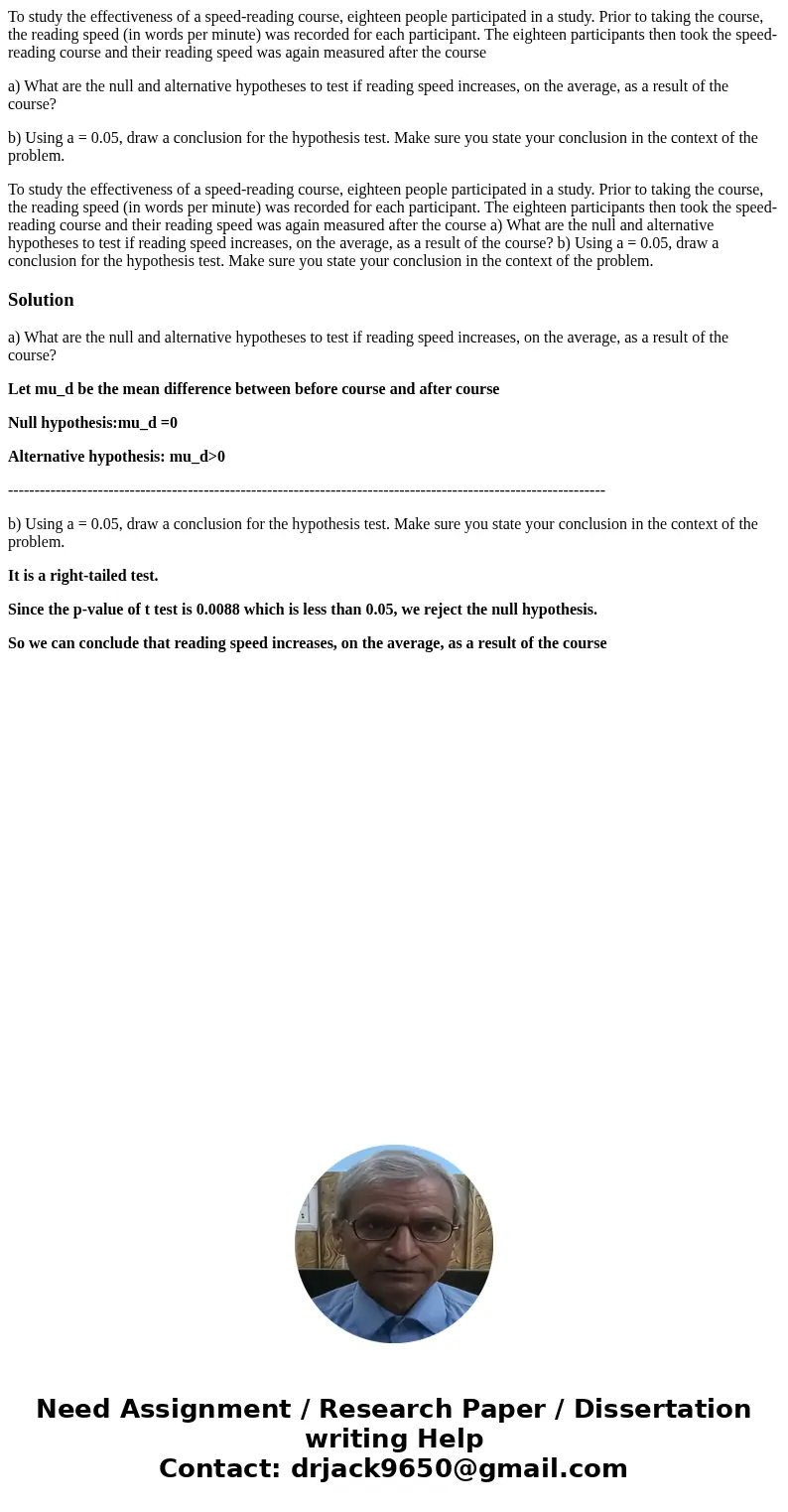To study the effectiveness of a speedreading course eighteen
To study the effectiveness of a speed-reading course, eighteen people participated in a study. Prior to taking the course, the reading speed (in words per minute) was recorded for each participant. The eighteen participants then took the speed-reading course and their reading speed was again measured after the course
a) What are the null and alternative hypotheses to test if reading speed increases, on the average, as a result of the course?
b) Using a = 0.05, draw a conclusion for the hypothesis test. Make sure you state your conclusion in the context of the problem.
To study the effectiveness of a speed-reading course, eighteen people participated in a study. Prior to taking the course, the reading speed (in words per minute) was recorded for each participant. The eighteen participants then took the speed-reading course and their reading speed was again measured after the course a) What are the null and alternative hypotheses to test if reading speed increases, on the average, as a result of the course? b) Using a = 0.05, draw a conclusion for the hypothesis test. Make sure you state your conclusion in the context of the problem.Solution
a) What are the null and alternative hypotheses to test if reading speed increases, on the average, as a result of the course?
Let mu_d be the mean difference between before course and after course
Null hypothesis:mu_d =0
Alternative hypothesis: mu_d>0
-----------------------------------------------------------------------------------------------------------------
b) Using a = 0.05, draw a conclusion for the hypothesis test. Make sure you state your conclusion in the context of the problem.
It is a right-tailed test.
Since the p-value of t test is 0.0088 which is less than 0.05, we reject the null hypothesis.
So we can conclude that reading speed increases, on the average, as a result of the course

 Homework Sourse
Homework Sourse